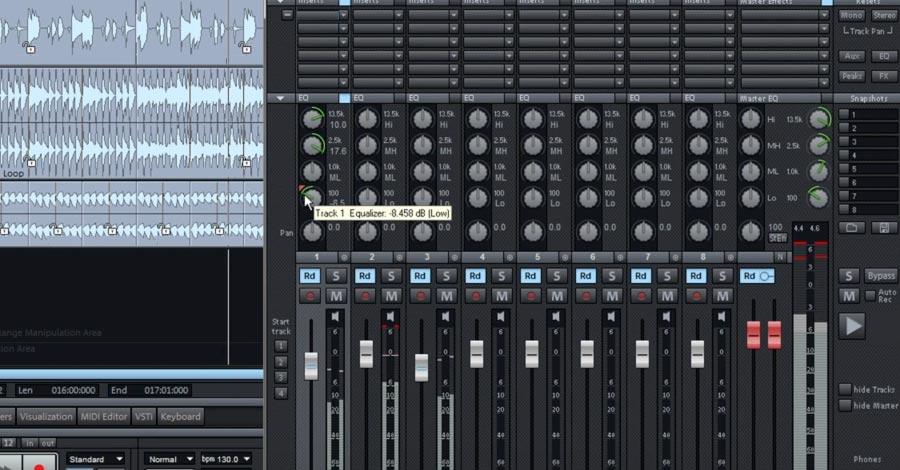

- Samplitude pro x3 tutorial full version#
- Samplitude pro x3 tutorial upgrade#
- Samplitude pro x3 tutorial software#
- Samplitude pro x3 tutorial tv#
Samplitude pro x3 independence sampler with a 12 gb database vandal special edition 20 virtual instruments ara vst extension melodyne essential new mixer layouts zynaptiq orange vocoder me birdline platinum pack v.6.0 samplitude pro x3 suite sound forge pro 11 full version independence sampler with a 70 gb database vandal full version 24. the expanded suite version of samplitude pro x3 adds four more ‘vita’ instruments to the already burgeoning collection of magix vst instruments: pop drums, a set of electronic and acoustic drum kits a concert grand piano recorded in an international concert hall a collection of. twenty of the 24 magix instruments that come with samplitude pro x3 suite. This is a tutorial to help those who are unfamiliar with using midi and virtual instruments and for those who have never used a daw before.
Samplitude pro x3 tutorial tv#
videos you watch may be added to the tv's watch history and influence tv recommendations. if playback doesn't begin shortly, try restarting your device. it basically shows you 3 different ways to insert vsti plug ins and choose the presets. this is a tutorial to help those who are unfamiliar with using midi and virtual instruments. (Remember, their clock is in Germany.Kraznet.

My advice is to buy the ProX III suite before that $150 promotion expires tomorrow. I did, even for projects with hundreds of edits. Yes, Sequoia is faster, but you'll get by.

When you need to make changes later, you split at the edit point, enable "link audio after cursor", and drag the right-hand side material onto an empty track while you work on the new edit. You learn to do your initial assembly from left to right. I am running Sequoia 13, and I'm not certain I'll move to 14, because it doesn't have any new features that I didn't already get with Samplitude ProX III.īefore buying a Sequoia license, I did plenty of piano editing in Samplitude, and got pretty darn fast at it. The Pro X naming has confused things for Samplitude, but both programs are effectively at version 14 now. I didn't move to Sequoia until version 8. I had past experience with object-oriented work flow in SAW, and didn't want to give it up. I came to Samplitude when it was at version 5 because of its non-destructive object-oriented audio handling. If you didn't have Sequoia, what would you use?To the best of my knowledge, the only other DAWs with 3 and 4-point cuts are Sadie and Pyramix. If you didn't have Sequoia, what would you use?ĭavid, have you used any mainstream daws that were close to the Sequoia 4 pt editing capabilities for classical piano? I assume the issues are (1) speed, time to go through large numbers of small edits and (2) getting totally clean results, no clicks, no evidence whatsoever. My understanding is you can work super fast in Sequoia and achieve #2 with less tedious painstaking work? Seventh String RecordingDavid, have you used any mainstream daws that were close to the Sequoia 4 pt editing capabilities for classical piano? I assume the issues are (1) speed, time to go through large numbers of small edits and (2) getting totally clean results, no clicks, no evidence whatsoever.
Samplitude pro x3 tutorial software#
In the meantime, as cheap as samp is now, I probably won't get it because I already have other daw software I would probably use first for routine stuff. Maybe I'll choke down $1500 at some point.

Samplitude pro x3 tutorial upgrade#
Just confirmed no upgrade path from samp x3 to Sequoia, no surprise there. I'm a university prof and can therefore get educational pricing - but that's still $1500 for Sequoia. Seventh String RecordingYes the prices for upgrades to new versions are incredible, never seen anything like it. There are a few extra fade curves in Sequoia, but once you copy those to the correct Samplitude directory, the same audio files will open on either platform. Then use that for your editing work, and do everything else in Samplitude. My advice is to keep an eye out for someone selling a transferable Sequoia license, even if it's a version or two back. (Don't get me started on Sequoia service agreements and upgrade pricing!) since two of these three features have been unchanged through seven major releases. Those of us who do classical production as independent engineers and producers have always felt we were being taken advantage of by the price differential, esp. The other features like multi-user administration and batch scripts are mostly intended for big media organizations. Of all the Sequoia-only features vs Samplitude, the crossfade editor, 4-point editing and multi-synchronous assembly are the main ones that matter to classical recordists.


 0 kommentar(er)
0 kommentar(er)
